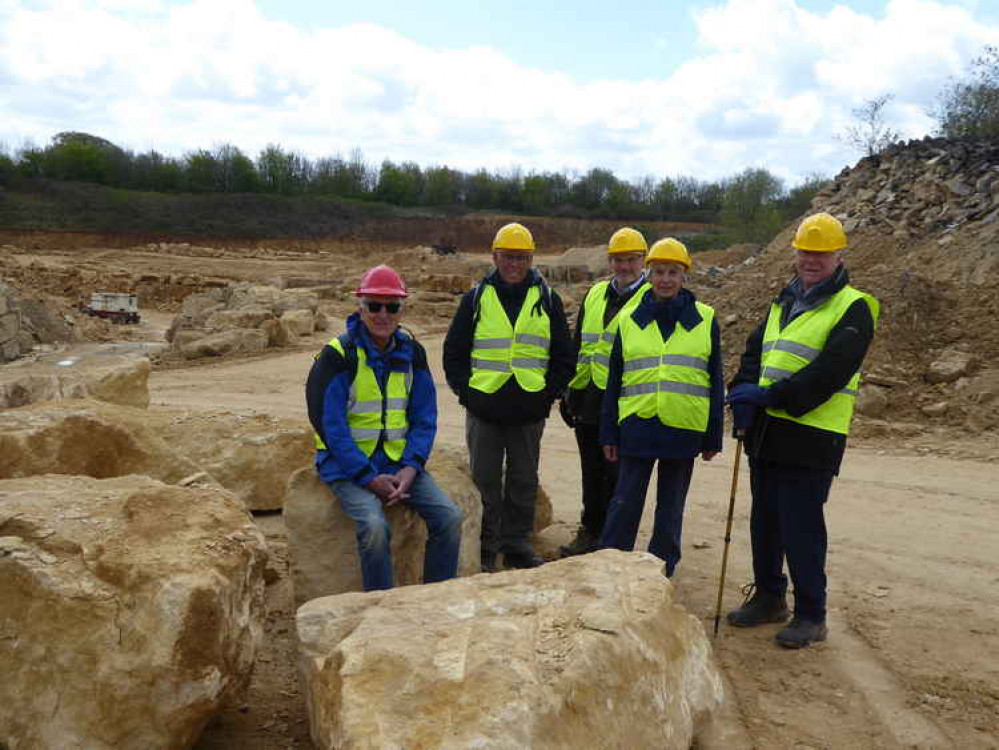Doulting quarry hosts geoscience event as part of GeoWeek 2021
By Tim Lethaby 1st Jun 2021
By Tim Lethaby 1st Jun 2021

While the organisers were not able to run all their original plans for GeoWeek in the Mendip area, they did manage to run some events, in Covid-secure groups of six.
GeoWeek participants enjoyed a visit to Doulting quarry, one of the oldest and longest-worked quarries in the UK.
Jurassic limestone from the quarry was readily cut and carved, and so was used to build parts of Wells Cathedral, Glastonbury Abbey and many buildings across the Mendips.
If you live in a stone-built house you will probably find the corner stones and the window and door surrounds are pale yellow or buff-coloured Doulting Stone.
Then there was a visit the 12th century Doulting Church and the 15th century tithe barn in Doulting village, both built of the local stone, and St Aldhelm's well, a spring flowing from the Doulting stone at its boundary with the underlying clay.
A Springs of Wells visit began in the Bishop's Palace gardens where the springs flow out, after which Wells is named.
Participants used a piece of rubber tubing, water and dye to show how the wells work and how their sources have been dye-traced.
Tor Woods were then visited to see the evidence that springs were flowing in a similar way, 200 million years ago. Maybe these are the longest-flowing springs ever recorded.
A spokesperson for GeoWeek said: "Our net-zero visit was to Sand Point near Weston-super-Mare, overlooking the Severn estuary.
"We welcomed two separate groups to discuss the potential impact of the government 'Net-zero by 2050' target on the local area.
"We examined the five metre-high raised beach our group is standing on, formed by higher sea level in the past, and discussed how a five metre rise in sea level today might impact the region.
"We looked at what a tidal barrage electricity generating system might mean for the estuary in the background, and how the Welsh coast wind turbines we could see, might affect our coastlines in the future.
"We investigated the rock structure to see if it was suitable for carbon capture and storage (CCS – it is not) and, by reference to the nearly visible Hinkley Point power station, whether the rocks are suitable for the deep geological disposal of radioactive waste (they are not).
"We considered whether the nearby outcrop of basalt lava rock might be used to remove carbon from the atmosphere by spreading on local fields for enhanced weathering, and a range of other options. We decided that there are big issues, with no easy answers."
CHECK OUT OUR Jobs Section HERE!
Shepton Mallet vacancies updated hourly!
Click here to see more: Shepton Mallet jobs
Share:







